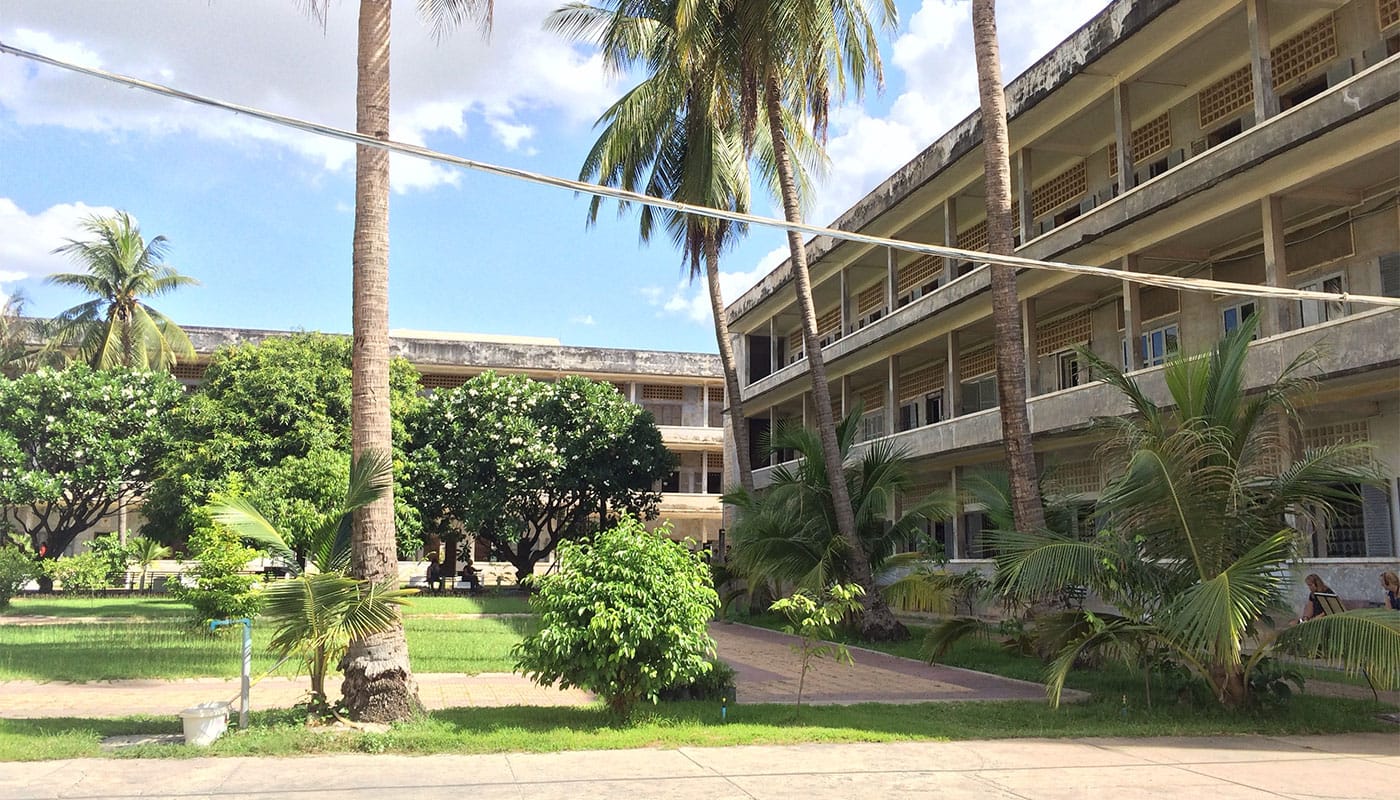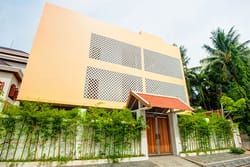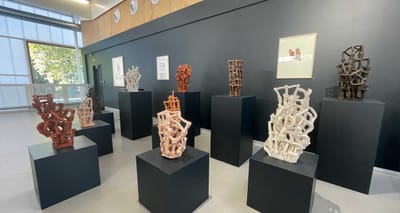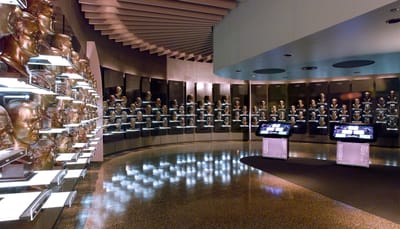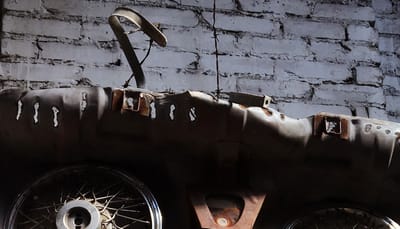Modern atrocities, like those carried out in Orlando, Brussels and Paris, surprise and shock us all. But history reveals countless examples of individuals and groups who have perpetrated evil throughout time.
I have seen the wreckage that hatred, self-interest or Machiavellian narcissism have left behind. The Nazi concentration and death camps in Germany and Eastern Europe are an example to us all, but one which we are still learning from.
When I visited the Tuol Sleng Genocide Museum in Phnom Penh, Cambodia, I didn’t expect to be moved in any significant way. Having studied so many genocides, wars and acts of hatred, I have become somewhat desensitized to historical death and destruction (both of my university degrees are in history). I approach these things with a focus on the facts, because I want to learn.
But Cambodia was different. The fallout from the Cambodian genocide, led by the Khmer Rouge regime, stared me right in the face. Inspired by Stalin and Mao, the Khmer Rouge exacted a reign of terror that would claim over 2 million lives – a quarter of the country’s population. The primary victims of the 1975-1979 genocide were the young people who would be the elders of today. They are a lost generation and, as a result, Cambodia is a youthful country.
My trip to the Tuol Sleng Genocide Museum was a powerful and emotional experience. I’d like to share with you some of the photos and stories from that visit, and I’ll talk a bit about the museum’s wheelchair accessibility.
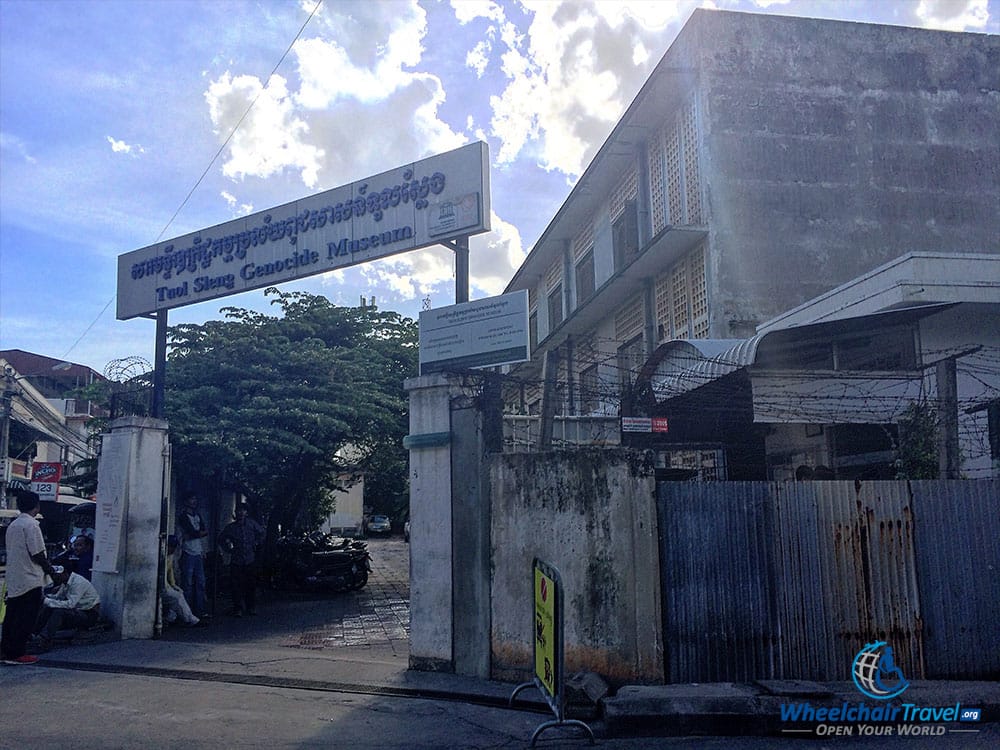
Tuol Sleng, a former high school, became the notorious Security Prison 21 (S-21) in 1975. At S-21, the Khmer Rouge regime held, interrogated, tortured and executed prisoners – the majority of whom were innocent.
As with most public school facilities, the Tuol Sleng campus sat in the middle of a community. The horrors that occurred inside S-21 were concealed behind a fortified wall and barbed wire. Only a handful of the S-21 prisoners would live to tell of the atrocities carried out there.
A ticket booth sits just inside the main entrance gate (pictured above). Admission is priced at $2 USD per person. Audio guides in multiple languages are available. I was offered complimentary admission, due to the limited accessibility within the museum.
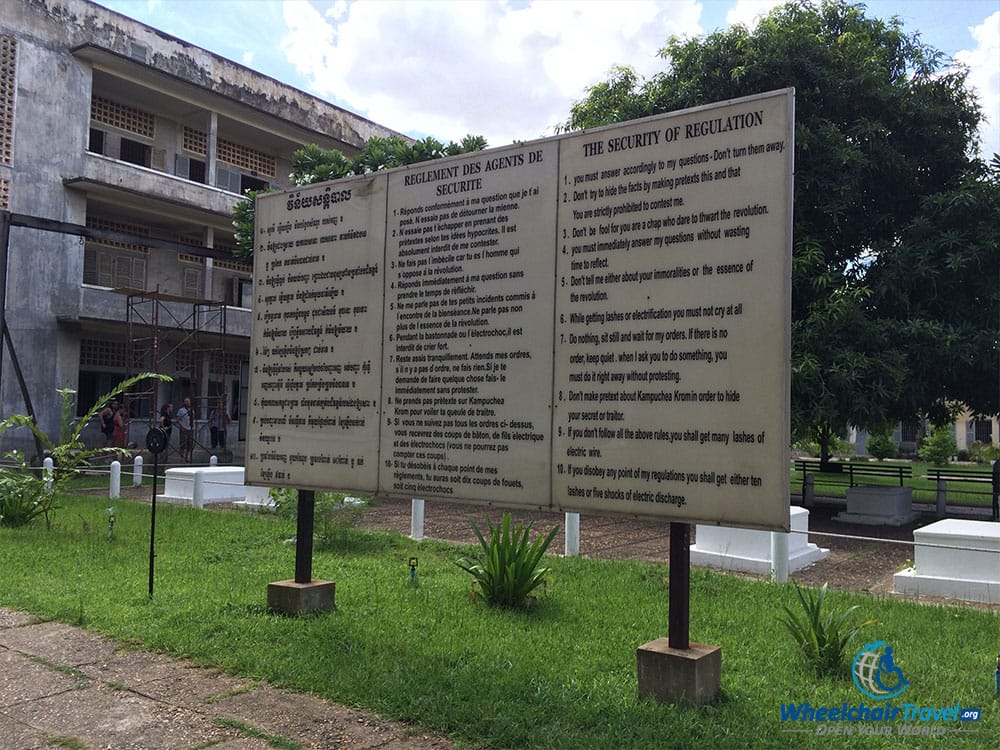
One of the first things you’ll see when entering the main courtyard of the prison (now museum) are a list of 10 security regulations. These rules were imposed on the prisoners. Additional violence and torture would be directed at those who failed to observe the rules. The text is copied below:
- You must answer accordingly to my question. Don’t turn them away.
- Don’t try to hide the facts by making pretexts this and that, you are strictly prohibited to contest me.
- Don’t be a fool for you are a chap who dare to thwart the revolution.
- You must immediately answer my questions without wasting time to reflect.
- Don’t tell me either about your immoralities or the essence of the revolution.
- While getting lashes or electrification you must not cry at all.
- Do nothing, sit still and wait for my orders. If there is no order, keep quiet. When I ask you to do something, you must do it right away without protesting.
- Don’t make pretext about Kampuchea Krom in order to hide your secret or traitor.
- If you don’t follow all the above rules, you shall get many lashes of electric wire.
- If you disobey any point of my regulations you shall get either ten lashes or five shocks of electric discharge.
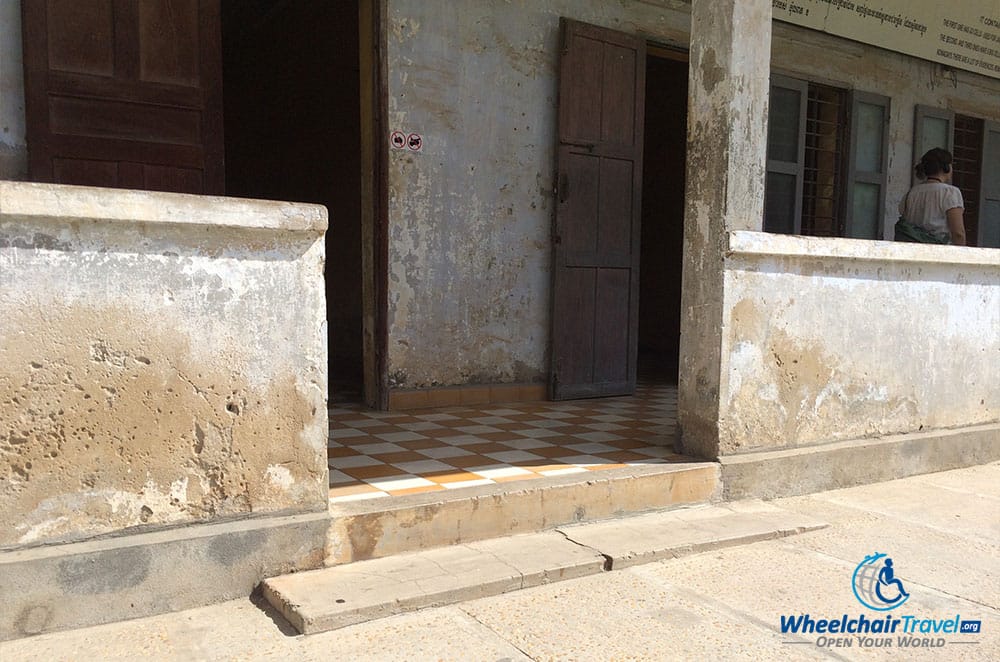
The self-guided tour of the buildings is largely inaccessible to wheelchairs, due to a step (or steps) at the entrance of all but one building. The photo above shows one of the smallest curb-like barriers. A manual wheelchair user could be lifted with the assistance of others, but I use a power wheelchair that is too heavy for that. Installation of a ramp here would be cheap and easy, and I have reached out via e-mail to the museum staff to see what can be done to improve accessibility.
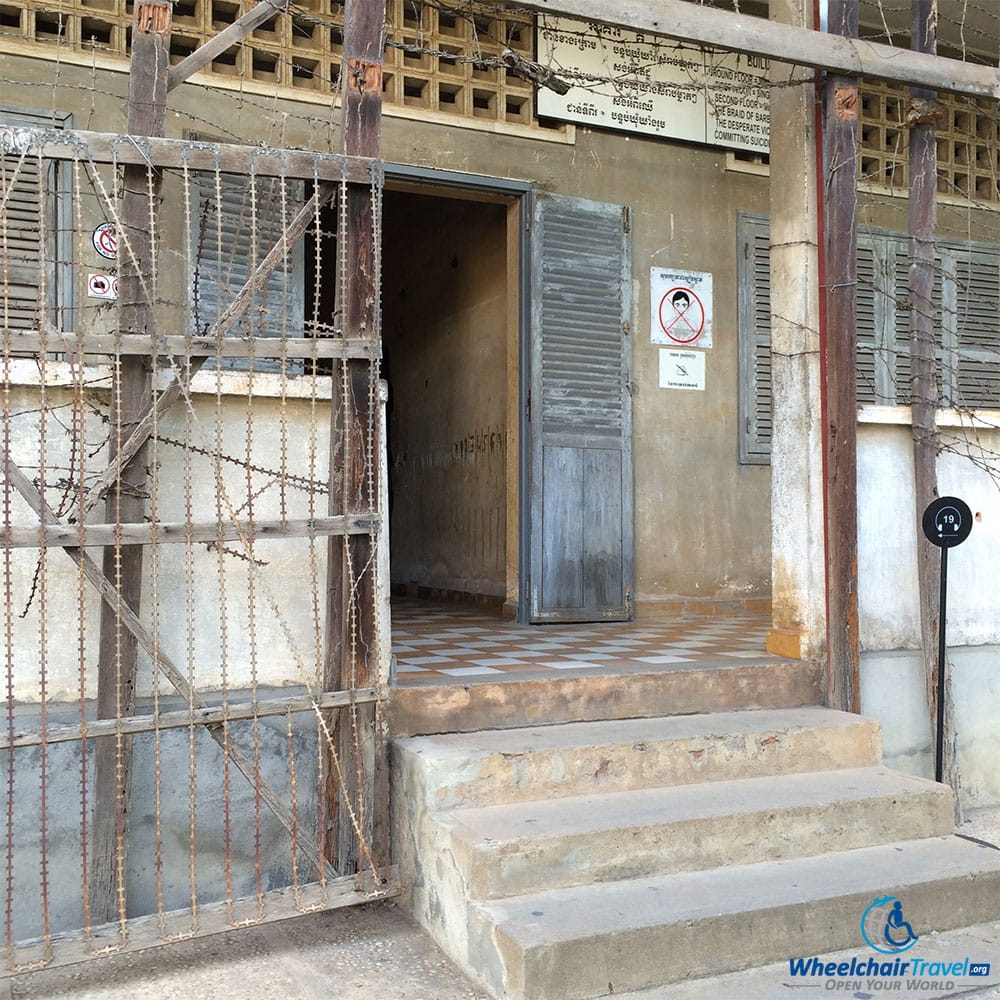
The photo above is another example of steps that prevent access to a building. While a more substantial ramp would be needed here, it can and should be done.
While ramps would permit access to the ground floor, some buildings also have exhibits on the upper (2nd) floor. These could not be made accessible with a ramp. But, I am never upset by a lack of access to upper floors in old, historic buildings – particularly those in developing countries. The ground floors of each building should be opened to wheelchairs.
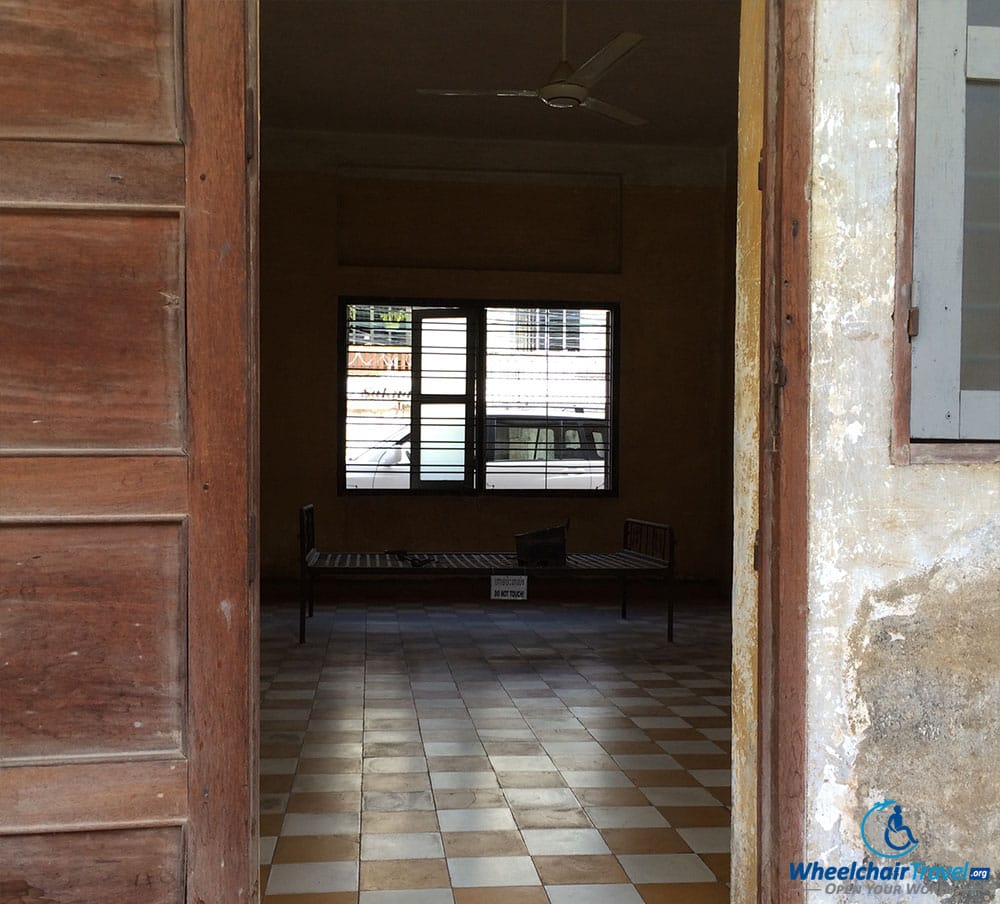
I was able to peek into some of the inaccessible buildings. This room, partially seen through a doorway, held a bed that was used to restrain prisoners. The bed was left here after Pol Pot’s regime fell.
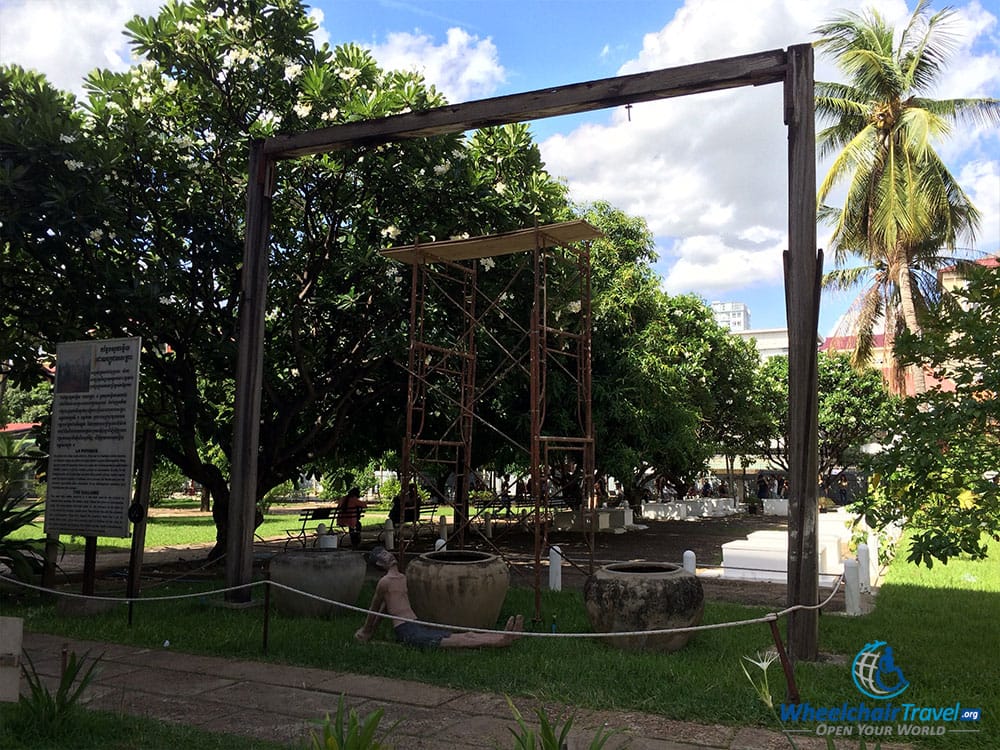
Prior to the Cambodian Genocide, children climbed and played on the wooden frame pictured above. When the Khmer Rouge took control of the campus and turned it into a prison, the frame was repurposed and became an instrument of torture.
Prisoners were hung upside down with their hands tied behind the back. Their bodies would be stretched until they passed out. The cauldrons below the gallows were filled with human excrement, and the unconscious prisoners were lowered into a rancid stew of urine and feces.
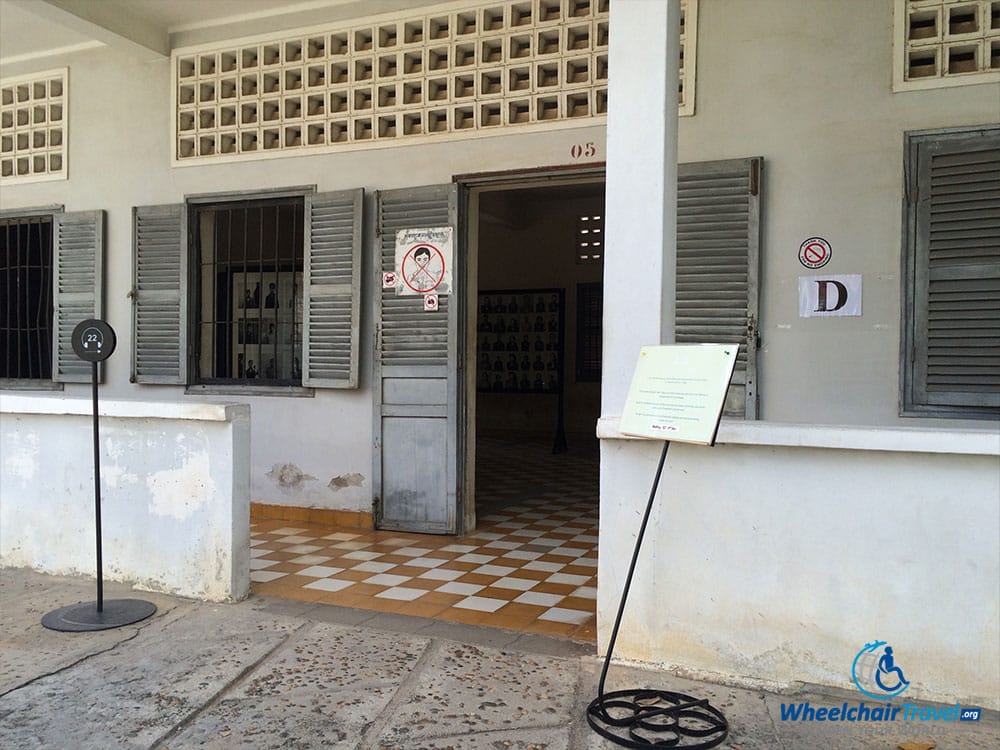
Building D, at the far end of the courtyard, is wheelchair accessible. The entryway is level with the sidewalk outside, and the doors are wide enough for even the largest power wheelchairs.
The exhibits in this building focused on the prisoners and their experience in the camp. A device used in the waterboarding of prisoners is also displayed there.
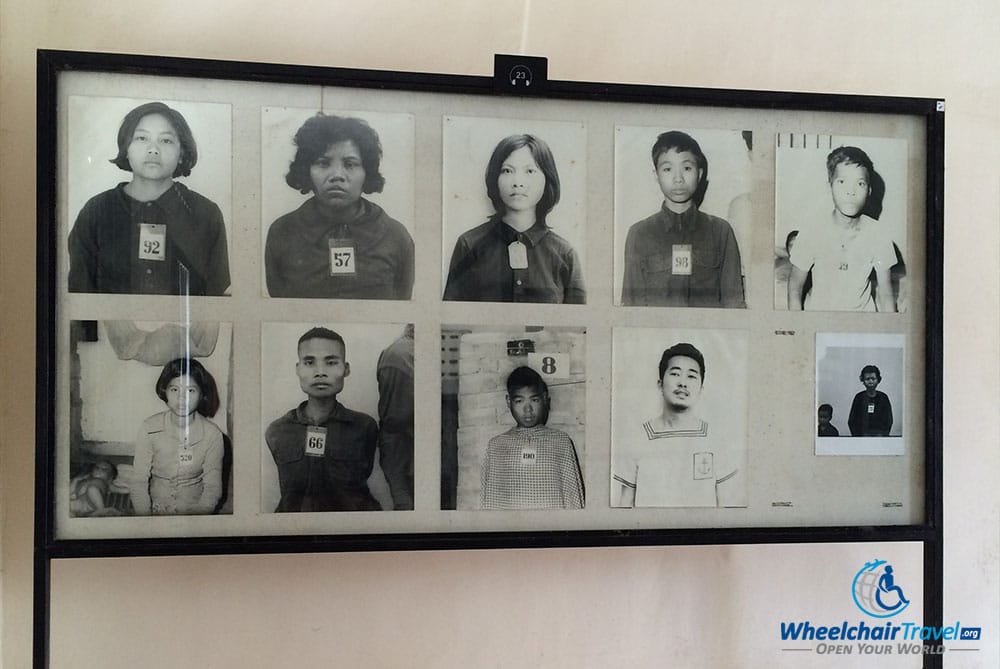
The Khmer Rouge maintained detailed records for each of the prisoners at S-21. Their numbers totaled between 17,000 and 20,000, with up to 1,500 had in the camp at any given time. The display shown here contains 10 pictures of prisoners who were brought to S-21.
As I mentioned before, the prisoners were young people – even children. Had they survived, those pictured on this display would be in their 50s and 60s.
Final Thoughts
S-21 was a death sentence. But the Khmer Rouge would not carry out that sentence until they extracted a written confession. The charge was usually “espionage.” There would be no trial. Regimes of terror are never concerned with justice. Only the maintenance of their power.
Of the 17,000 to 20,000 who entered S-21, only 7 are known to have survived. Only two of those 7 remain with us. The statistic is shocking. S-21 was an execution center. The prisoners were tortured until they gave their violators what they sought: a confession. They were then summarily executed, disposed of in the mass graves near to Phnom Penh.
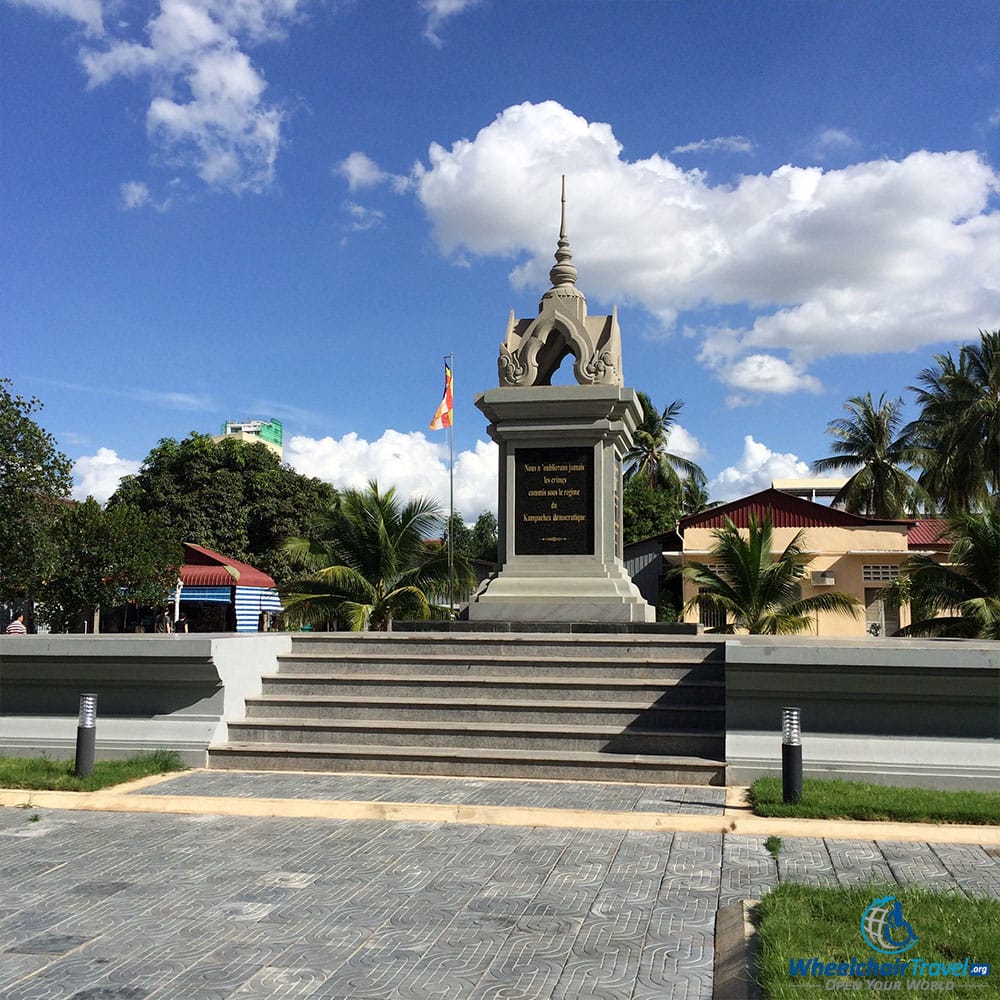
A memorial to the victims of S-21 was erected in front of Building D. In multiple languages, it reads:
Never will we forget the crimes committed during the Democratic Kampuchea regime.
We must not forget. Evil is powerfully destructive. Lastly, for perspective: a story similar to this one played out in more than 150 others prisons across the country. S-21 was not an isolated incident.
If you travel to Cambodia, you will recognize the absence of the generation that was lost. It is hard to miss, in a country of just 15 million.

